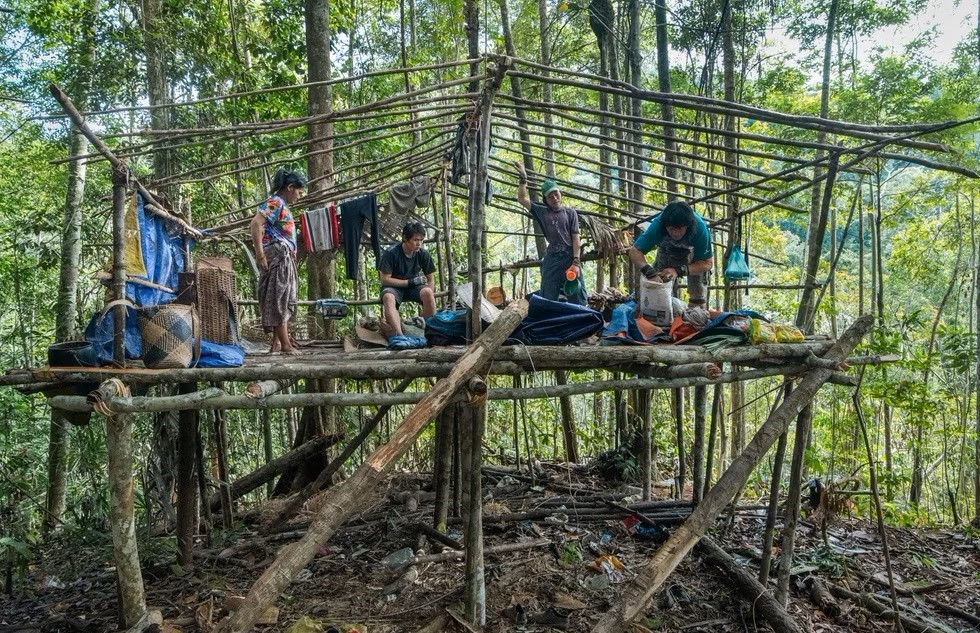Penan – The indigenous tribe from Borneo
Our world is big and there are many different people living on our planet. There are many different cultures and one of them are the Penan. An indigenous tribe from the island of Borneo, that’s a part of Malaysia and Indonesia. I would like to present this tribe in more detail, I would like to achieve that with a short insight into the culture, as well as insights from an interview with Rudolf Isenschmid, a friend of Bruno Manser. Rudolf himself was in contact with the Penan several times (2001,2003,2007,2011) and was one of the few people who went in search of Bruno Manser in the rainforest of Borneo after his disappearance.
As mentioned before, this work was done in collaboration with Rudolf Isenschmid. At the time of writing, he was in Cambodia working as a pilot. He was part of a group that opposed the illegal logging of the rainforest, which made the collaboration difficult. Nevertheless, we both enjoyed working on this project together.
In addition, it was possible to get in touch with photographer Tomas Wüthrich, who was in contact with the Penan in 2019. I received permission from him to use his pictures for this project. I would like to already thank him in advance.

The Penan – Today

How do the Penan live?
The society they build for themselves is not hierarchical. The only separation they make is that the men go hunting, and the women make the sago flour. Beyond that, there is no other specialization. In the Penan community there is no such thing as private property, they share everything they own, not wanting to share is considered a crime. Although the Penan live without much private property, they are not spared from the problems of the modern world. Due to the deforestation of the rainforests, they lose their livelihood. This is also confirmed several times by Rudolf in the interview.
What can we do?

What did I learn?
For me personally, it was a fascinating topic. The things I learned definitely opened my eyes. I am certain that just a few other topics would have been able to do it in such a manner. The people I have met during the process of creating were one of a kind. For example my friend Rudolf Isenschmid, a guy who has been with the Penan on multiple occasions, or the photographer Tomas Wüthrich, who kindly allowed me to use his phenomenal pictures. Additionally, I started to appreciate what I actually have and how good we have it here in Switzerland. The problems we are facing are almost non-existent in comparison to what the Penan face on a daily basis. It is almost incomprehensible for us, having to fight for our homes, for example.
I realized, that I do not need much to be happy. This might sound a bit like something a lot of people would say, but to see how the Penan live really changed the view on this world. Through the interview, I was able to experience second hand what it means to interact with this special tribe.
Team


Reviewer:
Janis G. & Damian K.
Sources
Text:
Penan
Ein Schweizer bei den letzten Penan-Nomaden (swissinfo.ch)
Bruno Manser Fonds (bmf.ch)
Pictures:
Tomas Wüthrich Fotografie (tomaswuethrich.ch)
Interview:
Interview mit Rudolf Isenschmid (PDF)
Related Posts on “Don’t Waste My Energy!”
Forests – why are they so important for us?
☷ See the project teams here »
☵ Some words about the contributions »
☴ Our sponsors and partners » (the-horse.education)


I particularly appreciate how you highlighted the deep connection between the Penan and the rain forest. What a privilege that you could lead such a intimate interview with Ruedi Isenschmidt!
While you mentioned that “their culture and way of life is not comparable to ours,” I wonder if this might unintentionally create a sense of separation. After all, the Penan are also human, the same species as we are. Perhaps instead of focusing on the differences, we could explore the similarities and what we might learn from their sustainable way of living?
Thanks for this interesting article. Here some of my thoughts while reading it.
Penan vs. Europeans: Different Views on Nature
The Penan, living in Borneo, are closely linked with nature. They use its resources wisely and only take what they need, following nature’s rhythms.
In contrast, many Europeans see nature as something to use and control. This can lead to a gap between people and nature, making it harder to notice the environmental impact.
These varying views affect how the Penan and Europeans deal with environmental issues. The Penan focus on preserving their traditions, while Europeans work on reducing harm to the environment and promoting sustainability.
How can we learn from the Penan’s profound connection to nature to promote more sustainable approaches in our own society?
In my opinion it’s high time to embrace a Penan lifestyle once more.
Your interesting topic touches on many different important issues concerning forest people today and why they are important for us. It would be interesting to know why you chose the Penan. You mention „having to fight for our home“ but probably assume that the reader knows the reason; an explanation of what was and still is going on in the forests there, and the connection to our wood consumption is missing. I find it very authentic that you interviewed Ruedi Iseschmid for first-hand information and could use Tomas Wüthrich‘s photos! I also liked your reflection on what you learned.